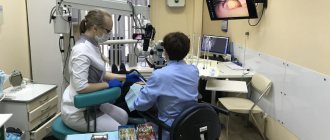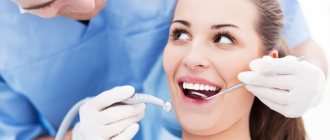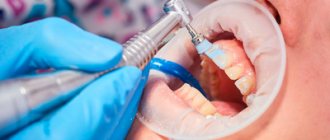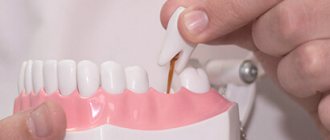You can often hear that dental treatment is carried out by a dentist, dentist or stomatologist, which is the same thing. In fact, these are different professions, and in order to know which specialist to contact if necessary, it is useful to know what the differences are in these specialties.
To obtain a diploma as a dentist (they are called dentists abroad), you need to graduate from a medical school or college with a specialty in Dentistry. A dentist is a specialist with higher education who has completed training at a medical university or institute.
A dentist does not immediately receive the right to practice independently. After graduating from the institute, he must undergo a two-year postgraduate internship - an internship, working under the supervision of an experienced colleague-manager.
Dentistry
The phrase dentist appeared in Russia in 1710. Before this, no one had treated the teeth; they were gradually destroyed . If a tooth started to hurt badly, it was simply pulled out. Thanks to Tsar Peter I, dental schools appeared. Only a hundred years later a decree was issued prohibiting practicing medicine without a diploma.
Gradually, dental faculties began to appear at universities. Dentistry began to develop rapidly as a science. There is a need to pay more attention to diseases of the oral cavity. Already at that time, people needed specialists with extensive knowledge in this field of medicine. Over time, the phrase dentist has become less common. It has been replaced by the word dentist. What's the difference?
In a modern college you can get an education and become a dentist after 3 years if you have a diploma. Such a specialist can work and treat teeth, but with some restrictions. For example, he will not be able to treat:
- pulpitis;
- correct bite;
- engage in complex prosthetics;
- do anesthesia.
In fact, many people do this in practice. Mainly in small settlements where there are no necessary specialists, the dentist is forced to provide assistance to people without having the right to do so by law. Essentially, he performs the functions of a dentist.
Abroad, a dentist is called a dentist . They receive education in secondary medical educational institutions. Few specialists abroad have a diploma of higher medical dental education. Mostly such specialists are found in large cities, and not in small towns.
How to find a good specialist?
Today there are many dental clinics, most of them offering prosthetics services. Crowns, bridges and other orthopedic structures are installed for a long time and are expensive, so no one wants to end up in the hands of an amateur. What should you pay attention to when choosing a doctor?
- Patient reviews. There are several sites on the Internet where patients share information about the doctor’s work. The most important reviews are from patients whose orthopedic construction has been in place for more than one year, this is an indicator of qualified work.
- Is a prosthetist on the staff of the dental center? Many clinics invite outside specialists to come for 2-3 hours a week. If problems arise after prosthetics, finding the doctor who performed the procedure will not be easy.
- It makes sense to come for a consultation and discuss issues of interest with the doctor in a personal conversation. It is important to understand what diagnostic tests he will prescribe, how he will draw up a treatment plan, and whether he will take into account the patient’s health condition. The answers to these questions can tell a lot about the professionalism and responsibility of a doctor.
Average prices for a doctor's consultation
The cost of a doctor’s consultation and the prosthetics itself depends on the complexity of the case, the materials used, and the clinic’s pricing policy. Average prices in Moscow are as follows (in rubles):
| Clinic | Consultation | Installation of a metal-ceramic crown |
| European Dentistry Center | For free | 7990 |
| All yours | For free | 8300 |
| Art-Stom | For free | 10400 |
| Alpha-Dent | 300 | 7000 |
Pensioners and some other categories have the right to free prosthetics if they have a compulsory medical insurance policy, but in this case they will not be able to choose a doctor.
Who is a dentist?
The main difference between a dentist and a dentist is the level of education. The dentist has more knowledge, experience and skills, as well as authority. To obtain a specialist diploma, he is forced to study for 5 years and undergo a residency for 2 years. In addition to knowledge in the field of dentistry, the future specialist also studies other diseases of all systems of the human body:
- anatomy;
- human physiology;
- histology;
- psychology;
- pharmacology;
- biological chemistry;
- bacteriology;
- healthcare organization, etc.
This is due to the fact that it is impossible to treat the oral cavity without studying the human body. The specialist must know how other organs are structured and how they are connected to each other . Psychology is also necessary, since people often come to appointments in a depressed and nervous state.
All graduates after graduating from medical university receive a diploma in general dentistry. Immediately after this, the graduate must choose a narrow specialization:
- dentist-therapist;
- dental surgeon;
- orthopedic dentist;
- orthodontist;
- pediatric dentist.
If you wish, you can master all specialties. This will take a long period of time and money. What do these specialists do?
Therapist and orthopedist
A dentist and dental therapist will be able to provide assistance in treating a diseased tooth or changing a filling. They will both be able to identify the cause, examine the oral cavity, and talk about the rules of dental care. As for dental disease, in this case the dentist will be in a difficult position. Due to his qualifications, he will not be able to treat deep caries if there are problems with the gums, the tooth is severely damaged, or the pulp is inflamed. With such problems, he will refer the patient to a dentist-therapist . It is recommended to visit this specialist once every six months to avoid dental diseases.
An orthopedist deals with dental prosthetics. It helps a patient who has lost a tooth to restore chewing function and not be embarrassed to smile. He is also sometimes called a prosthetic dentist. Before visiting an orthopedist, the patient first goes to a dental therapist and after treating the masticatory organs, he refers him to an orthopedist.
The difference between them is clear: one deals with treatment, the other with prosthetics. First you need to go to an appointment with a dental therapist and then an orthopedic dentist. This specialty is now in great demand. Such a specialist will be able to offer the patient several options for prosthetics , including the most modern ones.
Surgeon and orthodontist
When a tooth cannot be treated and is completely destroyed, there is only one way out - to remove it. This problem is addressed to a dental surgeon. Patients also turn to such a specialist if there are other problems:
- malocclusion;
- injury to the jaw or its joint;
- prepare the oral cavity for implantation or implantation;
- anomaly of the dentition.
These are quite complex manipulations that only such a doctor can perform. He will give recommendations for oral care after tooth extraction, and also tell you what needs to be done to make the wound heal faster.
Who are orthodontists? They are engaged in correcting the pathological structure of the jaw. Their work comes down to correcting the curvature of teeth, eliminating improper growth of the dentition, individual teeth, and reducing the distance between them. Nowadays popular braces are also installed by an orthodontist. They are well tolerated by patients because they do not injure the tissues of the oral cavity.
These specialists work with adults and children in the same way. Children are often brought to them with a bite problem , since in childhood this problem can be corrected quickly.
What is the difference between a dentist and a dentist: who is he and what does he do?
The word “dentist” is rarely used in our country; most often this is the name given to foreign specialists involved in the treatment of oral diseases. In the Russian-speaking environment, it is synonymous with the concept of “dentist”.
Orthopedic dentist - description of specialty
The name “orthopedic dentistry” was given to medical qualifications for the protection, restoration and prosthetics of the maxillofacial area. Sooner or later, every person needs to protect damaged tissue with a crown or prosthetics. The rating of dentists is opened by an orthopedist.
Situations in which the help of an orthopedist is needed:
- Tooth decay and loss. In this case, its function is restored by installing an artificial one.
- Protection from destruction. If only part of the bone tissue has been corroded, and the roots are intact and healthy, a crown is installed on such dental tissue, which stops further destructive process.
- The teeth are completely intact and healthy, but their appearance does not suit the owner. Installing ceramic plates will eliminate problems such as chips and scratches.
If the tooth tissue and root are healthy, then restoration is sufficient. Otherwise, prosthetics are performed. To determine what treatment plan is needed, the doctor conducts an examination, after which he makes a dental modeling in his laboratory. The orthopedist also deals with the correction of the appearance of the dental system, i.e. issues of aesthetic dentistry.
- Tooth decay and loss. In this case, its function is restored by installing an artificial one.
- Protection from destruction. If only part of the bone tissue has been corroded, and the roots are intact and healthy, a crown is installed on such dental tissue, which stops further destructive process.
- The teeth are completely intact and healthy, but their appearance does not suit the owner. Installing ceramic plates will eliminate problems such as chips and scratches.
What is an intraoral scanner used for?
Using an intraoral scanner, you can immediately scan the patient’s teeth directly and immediately receive a digital 3D model of the teeth online. That is, teeth are scanned instead of taking classical impressions.
What are the advantages of intraoral scanners? First: convenience and comfort for the patient. There are a number of patients who cannot tolerate conventional impression materials. They develop a gag reflex - for example, it is very common in children.
And for such patients, intraoral scanning is probably the only possible way to make a digital impression of their teeth. Second, intraoral scanning allows for significantly higher accuracy than traditional impressions.
For example. When we make a high-precision A-silicone impression of teeth, then cast a plaster model for 3D scanning in a laboratory scanner, at the stage of taking the impression and casting the plaster model, an error of about 100 microns is obtained. Modern intraoral scanners provide 5-7 times higher accuracy – up to 12 microns.
Accordingly, the digital model obtained using intraoral scanning is significantly more accurate. This is very important for orthopedics, in the production of crowns, and it is also important in the production of aligners. Why? Because the aligner works by fitting the teeth very well. And if the impression is not accurate enough, this means that in some places the aligner will not fit the teeth enough, will not press as expected, and, accordingly, some of the movement of the teeth may not happen because of this.
This rule is confirmed by the statistics of our company. We see that clients who use intraoral scanners in their practice, in their clinics, have a significantly lower revision rate than those clients who work with traditional impressions, even if they use high-precision A-silicone.
Manufacturers of intraoral scanners
Today, there are 7-8 companies widely represented in the world that produce intraoral scanners. Firstly, the ones I talked about. This is CEREC from the German company Sirona, this is the iTero scanner, which is currently produced and owned by Align Technology. This is a company that also makes Invisalign aligners. This is the American company Carestream. This is the European company 3Shape with a TRIOS scanner.
Recently a very worthy scanner has appeared on the market - in terms of scanning quality and convenience, and most importantly, with the most reasonable price. The scanner is called i500. From the Korean company Medit.
Star Smile is a partner of major scanner manufacturers
We, the Star Smile company, have established contact and cooperation with all of the above manufacturers, which allows our clients, when using these scanners, not to have to deal with sending stl files to our company, but simply to create an ID scan number in their personal account, and we, using our agreement, online connection with the servers of scanner manufacturers, we will independently gain access to the intraoral scan, to stl files and will be able to begin production of aligners.
One of our last contracts that we were able to conclude was a contract with Sirona, thanks to which we now have access to CEREC scanners. Any client who owns a CEREC scanner (we are primarily talking about the latest Omnicam models because the previous models are not very suitable for orthodontics, they are mainly intended for orthopedics) can take an intraoral scan of the patient and immediately send this intraoral scan to us at laboratory for the production of aligners.
This is a very important contract for us, because in both Europe and America CEREC occupies a leading position in the intraoral scanning market. I think that up to 50% of our new customers who register on our website in Europe and North America own CEREC scanners.
What other advantages of intraoral scanning for Star Smile clients?
Another advantage is the speed of data exchange between the clinic and us, as manufacturers of aligners.
If the doctor takes traditional impressions of teeth, then in order for us to begin production, these impressions must either be scanned in-house at the clinic, or sent to our office for digital 3D scanning.
Sending dental impressions and the process of scanning them into 3D dental models takes quite a lot of time. On average, it's probably two to three business days.
If the doctor works with an intraoral scanner and has scanned the patient’s oral cavity, then we can begin production of the virtual SetUp as part of the aligner production almost immediately after the doctor has completed the scan and registered the order in our system.
We see that on average this reduces the production time for a virtual SetUp by 2.5 days, which is very good, considering that the average production time for a virtual SetUp is just over 4 days. This means that those clients who start working with intraoral scanning receive a virtual SetUp in two business days, even a little faster.
Another key advantage of intraoral scanning and intraoral scanners over traditional impressions is online control over the quality of the scan, which can be carried out by the doctor.
Let’s imagine such a situation that the doctor took impressions of the teeth, looked at them, and they seemed to him without errors, without flaws. I sent these casts to the laboratory of any manufacturer. And then, during 3D scanning, it turned out that the cast was not of sufficient quality. Somewhere there are braces, for example, somewhere, perhaps, the gingival margin is not “awakened” well enough, somewhere there are air bubbles or saliva. All this affects quality.
When working with traditional casts, this is only visible when casting a plaster model and scanning this plaster model. This is a very painful situation when it turns out that the impression is not of sufficient quality and cannot be used in the production of aligners. This is unpleasant because you have to call the patient to have impressions of his teeth taken, and a lot of time is wasted. We spend at least two or three days taking new impressions and sending them back to 3D scanning and production.
If the clinic works with an intraoral scanner,
then the doctor or his assistant who is engaged in scanning, during the scanning process can visually, on the computer screen, control the quality of the resulting scan, the quality of the digital model. If he sees that there is a mistake somewhere, then this place can be immediately rescanned. This virtually eliminates errors in scans, meaning there is no need to return the patient for rescanning.
Undoubtedly, the intraoral scanner is the most promising and useful technique for 3D dental modeling in the present and near future. But it’s also very expensive. We have diligently avoided the cost of scanners in the article, because now you will be offered a service that will solve your scanning problems without purchasing a scanner. Why buy a scanner, since the cost of intraoral scanners starts from 15 thousand euros? Taking into account all the above advantages, our company Star Smile launched a new service in January 2022, which we call “On-site scanning”.










